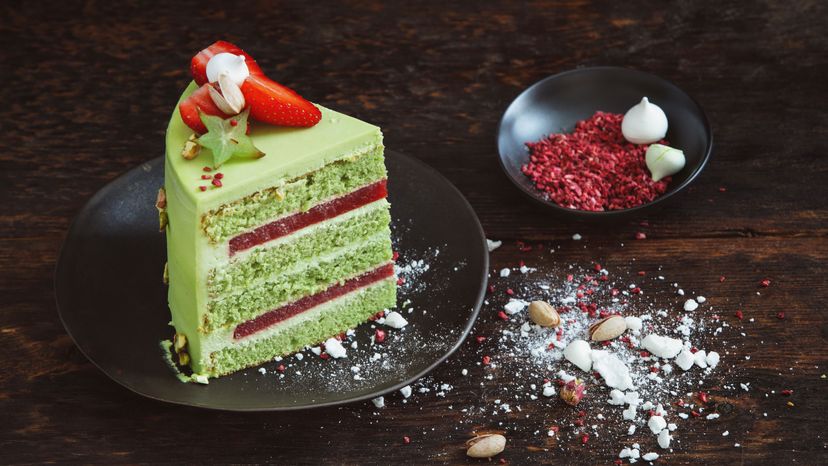Cake Types and Toppings

The ingredients that go into a cake aren't the only things that affect how a cake turns out. The methods with which they're combined make a major difference. As a result, a given cake usually falls into one of the categories below [sources: Malgieri, CraftyBaking]:
Creaming Method: Recipes include a fat, such as butter or oil. The creaming method is used to combine the butter and sugar using an electric beater. Once that's done, the remaining ingredients are added, alternating wet and dry. This method makes the cake moist, buttery and light. Most modern birthday cakes fall into this category, particularly layer cakes. Pound cakes are a variation of the butter cakes, although they are denser and simpler than layer cakes. Traditionally they called for a pound of each ingredient. Their heavy nature is offset by a light glaze instead of the standard frosting. Or they can be served with ice cream or fruit.
Advertisement
No-Aeration Method: This is for cakes with little to no flour and a creamy dense texture. There's little incorporation of air in mixing — the batter is folded rather than stirred. Beloved examples include the flourless chocolate cake and the cheesecake. Some recipes require baking, but many don't. Often the cake pan with the batter is baked inside a water bath — another pan filled with water to add moisture to cakes that tend to crack during the baking process, and provide a slower, more even source of heat while in the oven.
Egg Foaming Method: These cakes often don't include fats or leaveners to make them rise. Instead, they rely on whipped eggs or egg whites to encourage light, airy volume. Whipping the eggs with an egg beater or mixer introduces air into the batter, which in turn causes the mix to expand during the baking process. Angel food cake, chiffon cake and sponge cake are three well-known examples.
All-in-one Method: This is used most often with cake mixes and simple cakes. All the ingredients are added at one time in a bowl and mixed.
Many cakes are made more attractive with the addition of frosting, also known as icing. The earliest version is believed to be an almond and sugar paste created in the late 1400s to top marchpanes, a thin cake or wafer traditionally served at British fêtes [source: The Foods of England]. A French chef created the first known iced layer cake in the 15th century, and the first official frosting recipe emerged in 1655. It consisted of egg white, rosewater and sugar [source: Hunt].
Today, buttercream and fondant icings are the most prevalent toppings for celebratory cakes. Fondant presents a more refined, luxurious appearance, although it is far thicker and more difficult to handle than other icing forms, as fondant must be kneaded and rolled out before being placed on a cake.